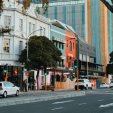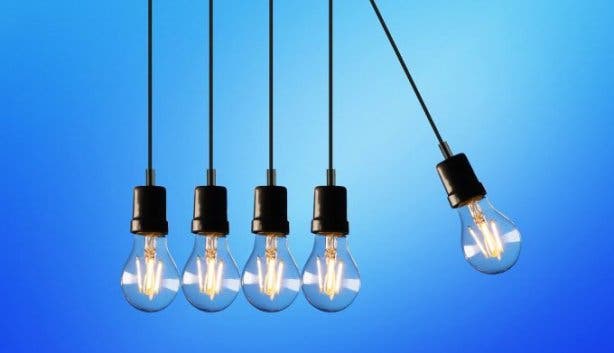Christmas lights, glühwein, wine tasting & kids zone
Loadshedding update: what's happening right now
Eskom customers are on stage 3 loadshedding while City of Cape Town is on stage 2
Last update: 23 September 2022
LOADSHEDDING IS A REALITY NOW.
WHAT IS LOADSHEDDING
It’s a way to avoid a total national blackout by rotating the outages; interrupting the supply to certain areas. It’s shedding the load in a systematic and controlled way. Loadshedding is implemented as an emergency for short periods of time – mostly over two hours, but sometimes for four-hour periods.
Loadshedding and local power outages are not the same thing. Local power outages can result from technical faults, such as in the case of theft of cables and overload from electricity theft.
ESKOM ON WHAT IT IS DOING TO CORRECT THE IMBALANCE
HOW TO SURVIVE LOADSHEDDING
First, know what to expect and understand the facts. Loadshedding is scheduled power-cuts, done in stages 1 to 8, with the last stage being the most severe.
Before power cuts take place, Eskom will send out loadshedding timetables to the country’s metros and municipalities. The City of Cape Town then updates these on its website and begins power cuts as per Eskom’s given schedules. For more info check the City of Cape Town's loadshedding schedule and timetable.

LOADSHEDDING STAGES EXPLAINED
Loadshedding happens in stages 1-8, with 8 being the maximum number of hours without power.
If shedding is scheduled for 6am, all affected customers should be without power within the first 30 minutes (6.30am). Each of the time blocks has an additional 30 minutes added to allow for a smooth transition to restore power in a way that will not damage the power system. When power is restored two hours (8am) later all affected customers should have electricity within the first 30 minutes after the power cut (by 8.30am).
To learn more here's information on Eskom's website.

WHAT YOU NEED TO BE PREPARED FOR LOADSHEDDING
Always have your loadshedding schedule and timetable ready to know when to expect power cuts in your area. The City keeps its loadshedding status updated.
Other practical things to do are:
-
Keep your cellphone, laptop, tablet and radio charged constantly
-
Fill your petrol tank as garages are also affected by loadshedding
-
Keep some cash on you as ATMs cannot operate without electricity
-
Have backup batteries for torches for temporary lighting, and candles and matches/lighters in handy spots
-
Prepare meals before the power is scheduled to be switched off
-
Boil water in your kettle and keep it in thermos flasks for hot drinks
-
Get insulating covers for teapots and other pots and pans to keep drinks and meals warm

THE CITY’S TIPS TO SAVING ENERGY
- Switch off what you don’t need – this is the golden rule when it comes to saving electricity
-
Delay switching on lights and appliances until after the peak periods (between 5–9pm) whenever possible
-
Switch off your pool pump, geyser and other large electrical equipment
-
Adjust air conditioners
-
Retrofit your homes and businesses with energy-efficient lighting
Water is another resource that needs our attention. Too keep abreast of news of the dam levels and how to support our efforts to save water read our water feature, which we update weekly.

HOW LOADSHEDDING BEGAN
In 2008, Eskom, the national energy supplier, which makes and supplies electricity, either directly or via municipalities (the City of Cape Town buys their electricity from Eskom), announced that rolling power cuts would take place around the country as they were failing to meet demand and supply.
To prevent the whole country’s grid from crashing, scheduled power cuts would start to enable Eskom to balance and level out the flow of electricity to the millions of households and businesses around the country.
Eskom said low coal stockpiles, a short supply of diesel, water and the weather were the cause. News reports have also blamed poor management at Eskom and a lack of planning for SA’s energy needs.
So, for the next few years until 2012 (2016 by some reports), loadshedding was done routinely.
Then in the middle of June 2018, Eskom was forced to implement loadshedding once again due to strikes; “the worst industrial action in 28 years”, Fin24.com reported on August 28 of the same year.

FULLY-CHARGED ACTIVITIES THAT DON'T NEED ELECTRICITY
-
Hike up Knife’s Edge, go gape at a forest of towering redwood trees (the tallest species of tree in the world), go gather for a Secret Sunrise and boogie down. Go do something out of the ordinary.
-
You should also browse through our list of things to do this weekend.
---
Use our events section for an up-to-date overview of what’s happening in the city, suburbs and dorpies. Join our newsletter and add us to your mobile home screen for the ultimate guide to discoveries in Cape Town.
Follow and like us on Twitter ❤ Facebook ❤ LinkedIn ❤ Instagram ❤ Pinterest for updates.


























